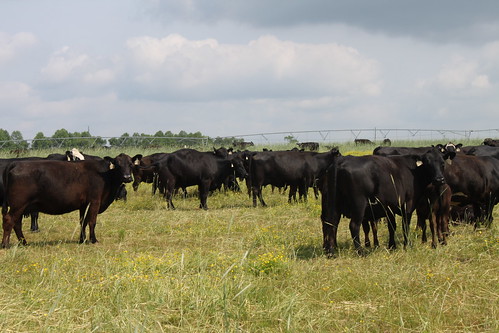
As a writer and editor for USDA’s Natural Resources Conservation Service (NRCS) in Washington, D.C. who relies on a bicycle to get around, I don’t get to four-wheel it very often. But I recently had the opportunity to ride a four-wheeler while visiting a North Carolina farm.
It was thrilling to get out of the city and into the field to check out how NRCS employees help private landowners voluntarily add conservation to their land—conservation that benefits both the environment and their bottom line.
I sat behind farmer Baird Kilpatrick on an ATV as he drove around his family’s 275-acre farm in Duplin County. It was a beautiful day, with an almost cloudless blue sky. Killdeer rose up out of the pasture grass when they heard us coming.
The farm has been in the Kilpatrick family for over 100 years. It’s mostly a hog farm; two large houses shelter 2,000 sows. (Duplin County has more hogs than any other county in the country.) There are also about 100 cows.
In the twenty-some years the Kilpatrick family has managed the farm, they have implemented some major conservation practices that both make it more efficient and protect the environment.
With NRCS assistance, the Kilpatricks have installed an irrigation system that sprays water from the 40,000-cubic-foot hog waste lagoon onto a 150-acre coastal Bermuda grass field. The amount of nutrients in the water and the amount of water are calibrated to match the needs of the grasses, which feed the 100 cattle that graze here.
NRCS has also helped the Kilpatricks protect the stream on their property by planting buffers around it and fencing it to keep cattle out of it; improve grazing by installing cattle watering facilities, implementing rotational grazing and diversifying the forages they grow; and make waste disposal easier by install a composting facility to dispose of dead hogs.
Baird has also initiated an energy audit with NRCS to find out how he and his brother can save energy across their farm, and a number of other forage management practices to maximize both productivity and natural resource protection.
I had the privilege of visiting the Kilpatrick family farm because I was working in the North Carolina state office. Seeing that farm and others in North Carolina has definitely given me a greater appreciation for how hard our farmers work to produce a healthy food supply and conserve our natural resources.
I wish everyone could have the opportunity to learn about agriculture by walking the land with a farmer— or in my case, four-wheeling it, with a farmer at the helm.
Check out more conservation stories on the USDA blog
